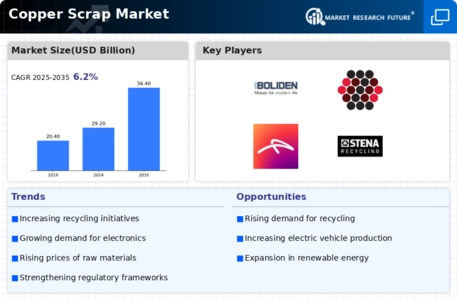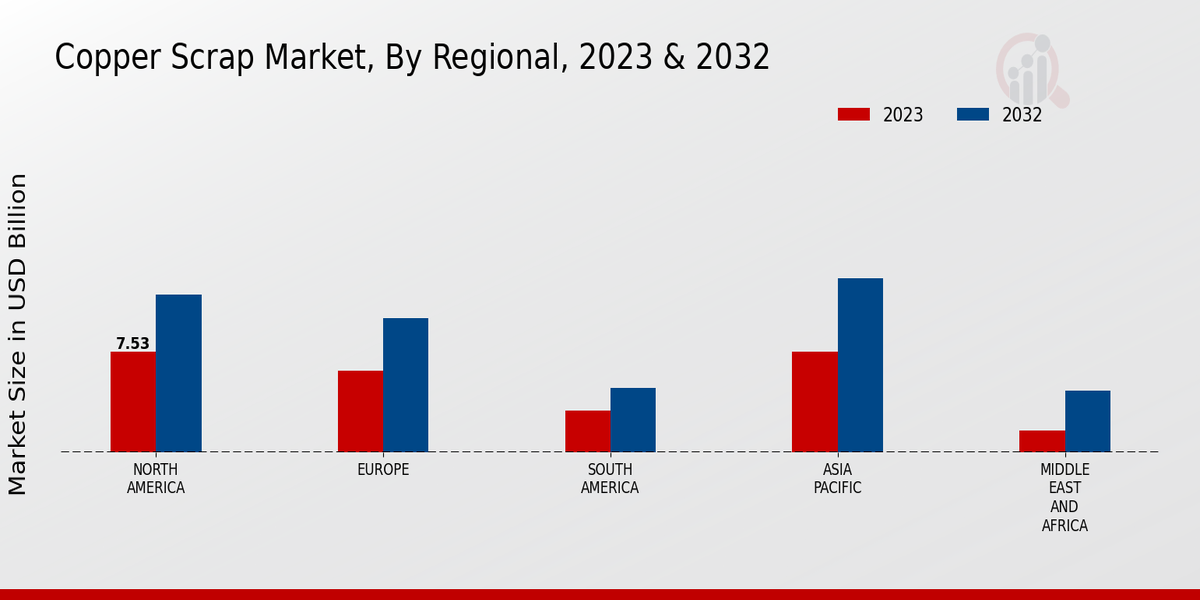Market Trends and Projections
Rising Demand for Copper Scrap
The Global Copper Scrap Market Industry experiences a notable increase in demand driven by the expanding electronics and automotive sectors. As industries seek to reduce costs and enhance sustainability, the utilization of copper scrap becomes increasingly attractive. In 2024, the market is projected to reach 29.2 USD Billion, reflecting a growing trend towards recycling and resource recovery. This shift not only supports environmental goals but also aligns with economic strategies aimed at reducing raw material dependency. The automotive sector, in particular, is likely to contribute significantly to this demand, as electric vehicles require substantial amounts of copper.
Growing Awareness of Sustainability
The increasing awareness of sustainability among consumers and businesses is driving the Global Copper Scrap Market Industry. As environmental concerns become more pronounced, companies are actively seeking sustainable practices, including the use of recycled materials. This trend is particularly evident in the construction and manufacturing sectors, where the demand for sustainable building materials is on the rise. The industry's growth is further supported by the potential for copper scrap to reduce carbon footprints and conserve natural resources. By 2035, the market is expected to reach 56.4 USD Billion, indicating a strong shift towards sustainable practices in various industries.
Government Regulations and Initiatives
Government policies and regulations play a pivotal role in shaping the Global Copper Scrap Market Industry. Many countries are implementing stricter regulations on waste management and recycling, encouraging the collection and processing of copper scrap. For instance, initiatives aimed at promoting circular economy practices are gaining traction globally, which could lead to increased investments in recycling facilities. These regulations not only help in managing waste but also stimulate the market by creating a more favorable environment for scrap collection and processing. As a result, the industry may witness enhanced growth opportunities, particularly in regions with robust regulatory frameworks.
Technological Advancements in Recycling
Technological innovations significantly influence the Global Copper Scrap Market Industry by enhancing the efficiency of recycling processes. Advanced sorting technologies and automated systems improve the quality and yield of recycled copper, making it more competitive with virgin materials. These advancements may lead to a reduction in operational costs and increased profitability for recycling facilities. As the demand for high-quality recycled copper rises, the industry is likely to benefit from these technological improvements. Furthermore, the integration of digital technologies in recycling operations could streamline processes, thereby attracting more investments into the sector.
Market Volatility and Raw Material Prices
Market volatility and fluctuations in raw material prices significantly impact the Global Copper Scrap Market Industry. The prices of copper scrap are closely tied to the prices of virgin copper, which can be influenced by global economic conditions and supply chain disruptions. This volatility may create challenges for scrap processors and recyclers, as they navigate the complexities of pricing and demand. However, it also presents opportunities for growth, as businesses seek to secure stable sources of copper through recycling. The projected CAGR of 6.16% for 2025-2035 suggests that despite these challenges, the market is likely to expand as industries adapt to changing conditions.






